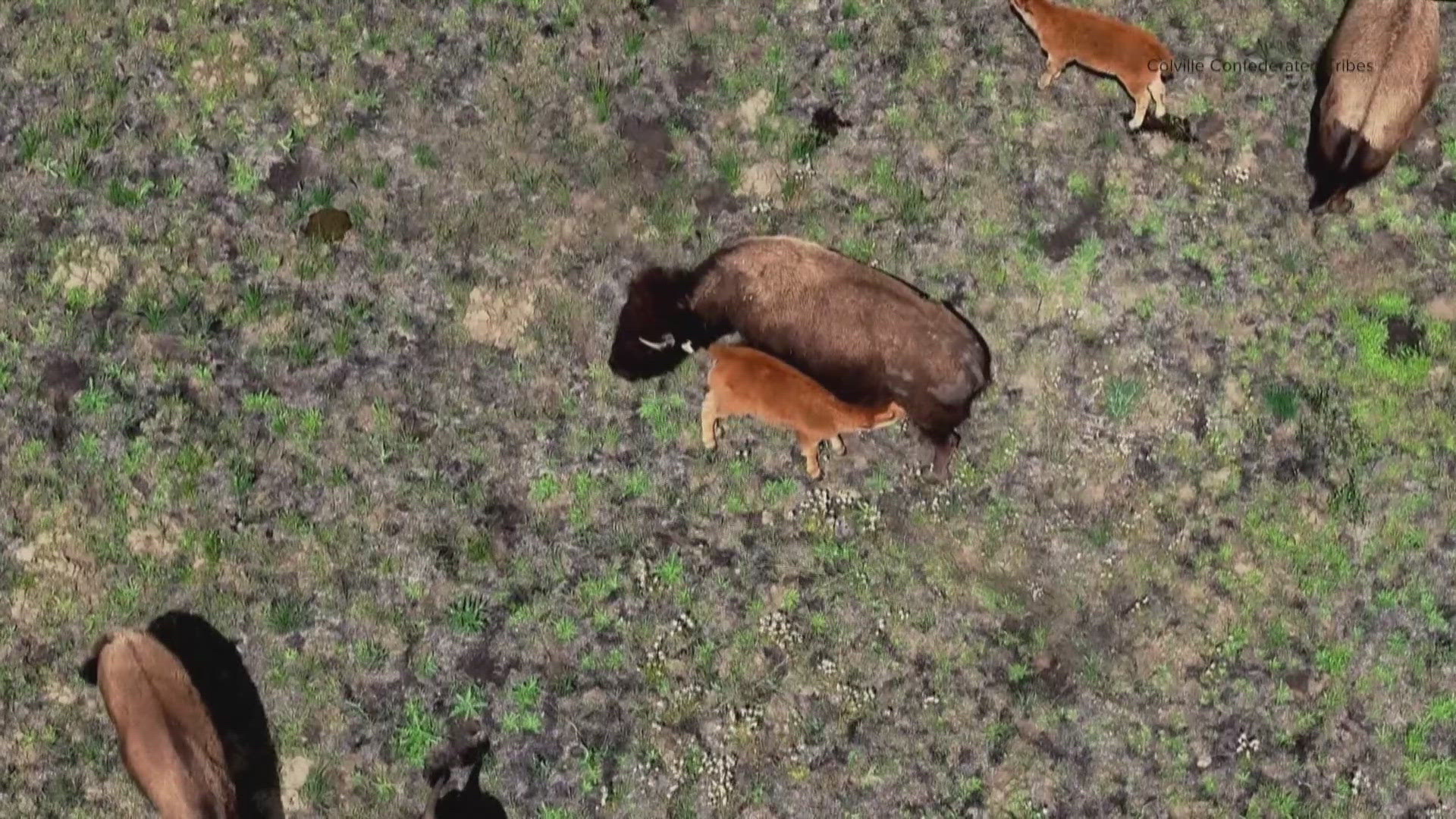NESPELEM, Wash — For the first time in a very long time, a new generation is taking its first steps on the Colville Confederated Tribes reservation.
If you’re lucky, you can spot them a short drive outside of Nespelem.
"To actually come out here and witness it, and they're just these tiny baby calves, it kind of just makes your heart warm," said Chairman Jarred-Michael Erickson of the Confederated Tribes of the Colville.
The calves he’s referring to are the newest crop of bison calves on the reservation. They’re among the first born on the tribal land in northcentral Washington. "They've been gone from here for at least a couple hundred years, 150 years, almost 200 years,” said Darnell Sam, who works as a traditional territories coordinator for the tribes.
Twelve tribes make up the confederation, including the Okanogan, the Moses-Columbia, the Nez Perce and the Wenatchi. At one point, their traditional territories stretched across eastern Washington, Oregon, Idaho and up into Canada.
While bison weren't widespread across the Inland Northwest, tribal leaders say several tribes used to make the journey east across the Rockies to hunt for them in the Yellowstone region. It was also common for some tribes to trade for bison with Plains tribes, said Sam.
Yet that wouldn’t last forever. As settlers moved west across the United States, the U.S. government moved the tribes to the Colville reservation in the late 1800s.
While the reservation is just outside of what is considered to be the historic bison range, Erickson said an opportunity landed in front of the council in 2023 when the Kalispel Tribe offered them several bison from their surplus population.
The council accepted and the first 30 head of bison were released near Buffalo Lake in the fall of 2023.
More than a year later, Erickson still describes the experience of seeing bison on the reservation as "surreal.” “I would never thought of as a kid we’d see these species be reintroduced or back on the landscape," he said.
But the bison are more than a symbol. They’re also changing and improving the ecosystem.
Colville Tribes Fish & Wildlife biologist Sam Rushing monitors the bison, treating them as a wild herd. “A lot of other species have coexisted with bison for thousands of years,” said Rushing.
As a keystone species, bison help maintain healthy ecosystems. Their grazing creates nesting grounds for birds and promotes plant diversity. Rushing also expects them to help water resources, protecting the creeks and riverbanks that serve as critical habitat for fish and other wildlife.
“They don't tend to spend a lot of time right down in the creek bottoms, like domestic cows will,” he said. “They'll come down for a drink of water, but then they'll move off and stay out of the creeks and streams.”
Beyond the environmental support, the bison also reconnects the tribes to their cultural heritage. Fish & Wildlife hunted in January the first of five bulls, as part of sustainable management. Afterwards, they set aside the meat for ceremonial purposes.
Sam was one of the people who played a part in the hunt: “We have this spiritual connection to all our foods and nothing goes without any sort of respect and honoring.”
The bison population numbered more than 45 members in early May. Rushing said the tribes hope to get that number up to a level they consider to be sustainable enough to be harvested by tribal members.
“I have no doubt we’ll get to that level,” he said. “It’s just going to take a little time.”
According to Rushing, some of the work that still needs to be done to figure that out includes doing an assessment on “range conditions to see what the habitat can support.”
Currently, the Colville Tribes Fish & Wildlife team is reviewing a draft of their bison management plan, laying the groundwork for both the future of the herd and the future of the tribes.
“It's kind of healing to reintroduce these species, you know, for your spirit,” said Erickson. “It really helps that healing process, the trauma we've gone through, to see a lot of these back on the landscape.”

